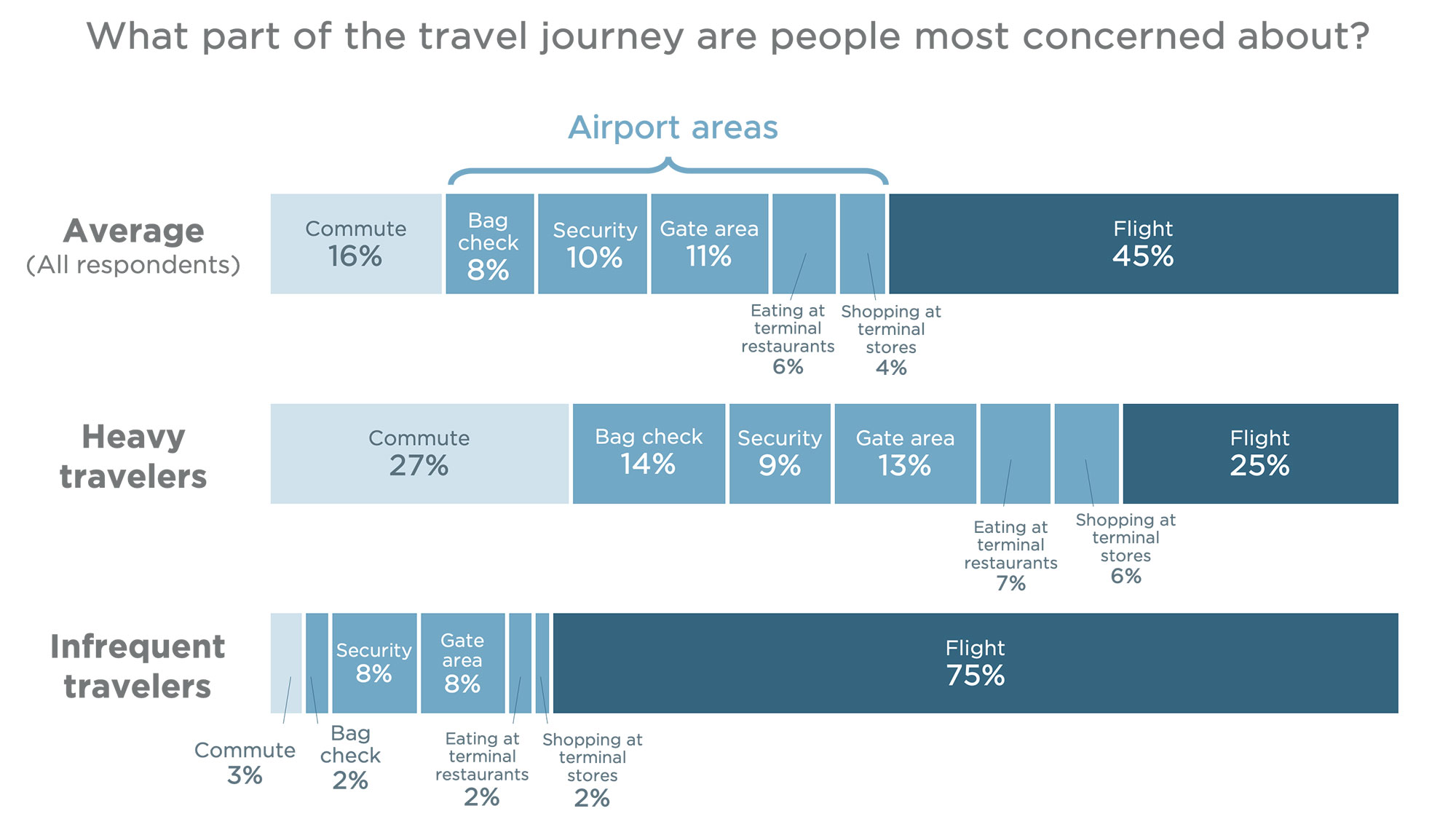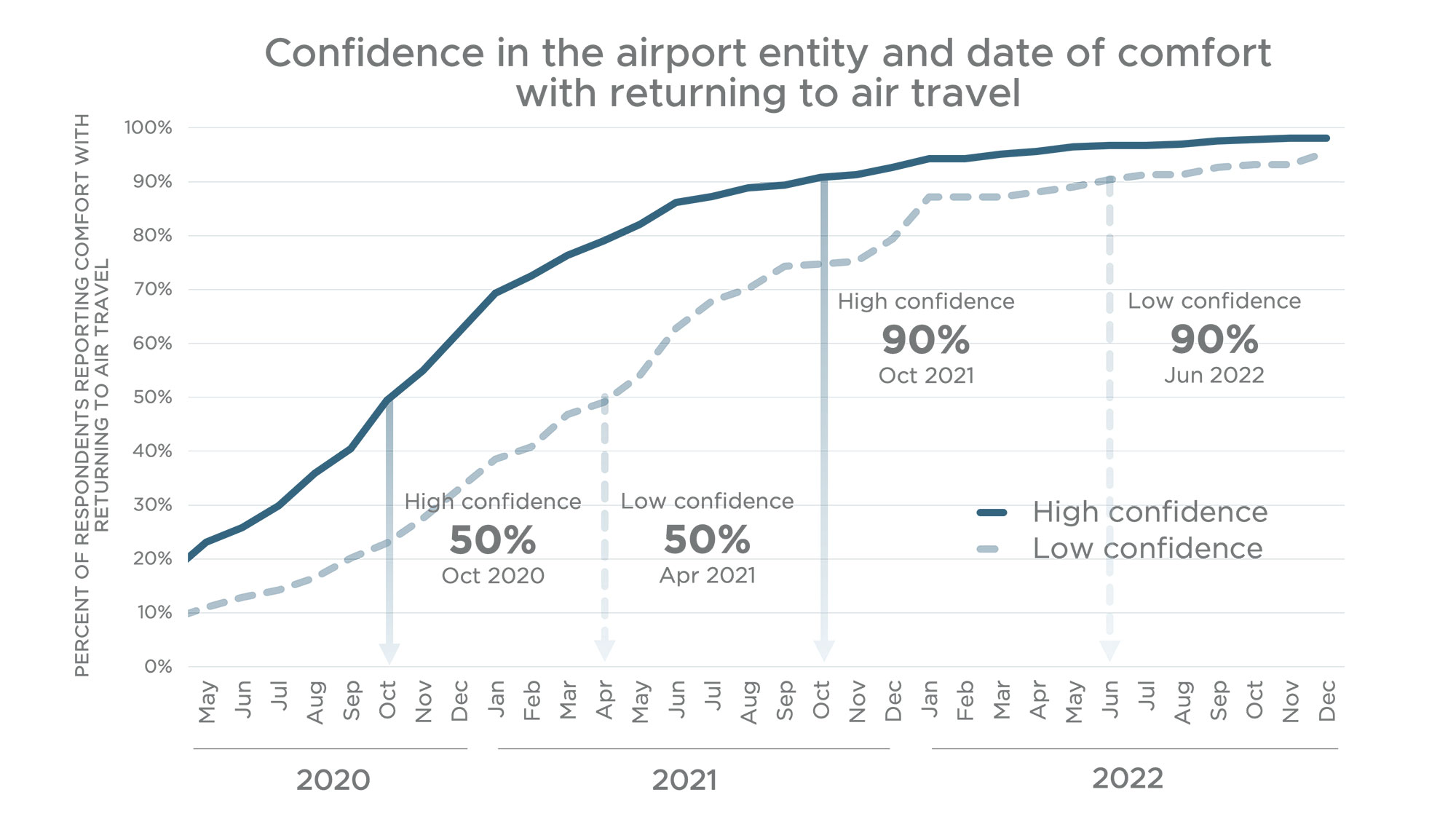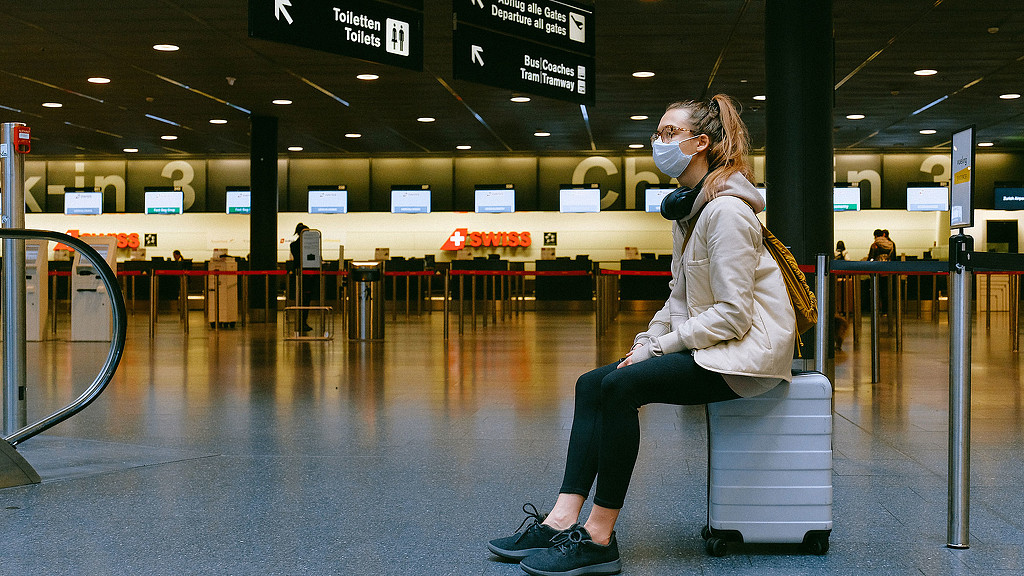How Airport Design Can Restore Passenger Confidence
July 10, 2020 | By Kirsten Ritchie
Editor’s Note: This post is part of our ongoing exploration of how design is responding to the COVID-19 pandemic.
As states and airlines gradually ease lock-down restrictions, it’s clear that Americans want to fly again. It’s also clear that there’s concern about how to do that safely. According to our research, personal health and the health of others is a top priority for passengers, with more than 70% saying health is a greater priority now than just four months ago. For frequent travelers, it’s the airport, not the flight, that’s most concerning. If the industry wants to get people flying again, it needs to restore passenger confidence in the airport as an environment that protects passenger health and safety.
To get a better understanding of people’s attitudes toward future travel, Gensler recently collaborated on a research project with View, developer of smart glass technology used at multiple airports including SFO, BOS, DFW, and LGA. The goal of the research was to develop informed recommendations on how to rebuild trust in the aviation industry through design. The survey of 970 people across the U.S. was conducted online via an anonymous survey in May 2020.
So, what are travelers concerned about? Interestingly, we found that people’s concerns depend on how frequently they travel. Infrequent travelers — those who take at most one flight per month — were overwhelmingly concerned with the flight itself (75%). But for the most frequent travelers — those who take more than five flights per month for business or personal reasons — the airport is the highest area of concern (49%).
These frequent travelers identified three key areas of concern inside the airport: baggage check, security, and the gate area. It’s clear that the passenger experience must be modified and improved for each of those areas through updated airport design and operations.

If we are going to redesign the stress points in the airport experience and restore confidence, the first step is to understand and address passenger needs in a COVID-19 world. Physical distancing, touchless technology, and environmental monitoring top the list as must haves for future travelers. These measures must be implemented from the curbside, to the boarding gate, and everywhere in between.
1. Entry point screening is a critical first step.At the airport, travelers want visual cues that smart procedures are being implemented to limit the spread of COVID-19. In a reimagined airport experience, passengers will be greeted at the curbside and other airport entry points with a touchless kiosk to monitor health and secure entry. A questionnaire and temperature checks will be performed in a seamless manner to minimize queuing and prevent potential disease spread. Ideally, this is all integrated with the traveler’s airline app, providing a more seamless passenger experince and integrated contact tracing functionality.
2. Ticketing, bag check and security are touchless, rapid, and designed to maintain physical distancing.With or without entry point screening, packed queues for bag check; dense, high-touch TSA security; and gate mobbing are notable stress points with frequent travelers in this time of pandemic. Redesigning layouts and queuing strategies, combined with leveraging new touchless technologies, can speed up processing, minimize the wait, and keep everyone at safe distances.
3. Post-security, passengers need to move freely with confidence.Following the screening processes post-security, passengers want to return to their comfortable shopping, dining, and waiting habits in an environment that prioritizes their safety. The post-security terminal spaces need to communicate the policies and conditions that restore passengers’ confidence inside the terminal. Our research shows that 86% of frequent travelers feel that real-time display of environmental conditions at the gate would ease their mind. Best-in-class airport designs deliver clean air via a multi-tiered filtration process, but new technology needs to be put in place to measure conditions at the passenger level and then clearly deliver the information in an unobtrusive way. Surfaces need to be cleaned regularly and when possible, continuously monitored with technology.
Why passenger confidence is so importantRestoring passenger confidence is not an academic exercise. During our research, passengers reported that they would return to travel sooner if they were confident in airport health policies. We believe that by investing in design that can make passengers feel more confident, airports can accelerate the rate of travel by up to eight months.
But there’s work to be done. At the moment, just 20% of travelers said they were currently comfortable traveling. As time goes by, we’re showing an increased confidence in the airport — up to 50% in October 2020. But our survey also shows that without confidence, passengers won’t reach the 50% milestone until April of 2021. The contrast is more dramatic the further out you go on the timeline (see graph, below).

This data suggests that changes to the design and operation of airports that help passengers feel more confident are critical to the recovery and future profitability of the aviation sector. If we can take these steps now to help restore people’s trust in the airport environment, they will ultimately make the traveler experience better for everyone in the long-term, and encourage even more people to fly again.
To read the complete research results with additional findings, download the research paper here . Please contact us to learn more about this research and begin a conversation about how we can support you now and into the future.
For media inquiries, email .

